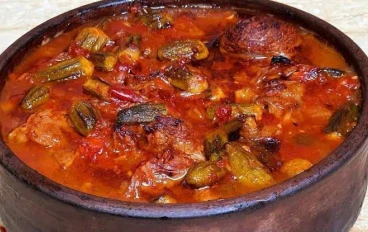
Exploring Unique Flavors: An Introduction to Spanish Cuisine.
Have you ever wondered about the origins of the foods we eat every day? In this article, we'll take a quick tour of international cuisines to explore different culinary cultures and learn about the famous traditional foods that reflect the history and traditions of each country. And we'll start our journey in Spain, where we'll explore the Spanish cuisine, known for its diversity and richness of unique flavors and ingredients.
Description:
This article provides a comprehensive introduction to Spanish cuisine, exploring its history, traditions, and main ingredients. It also highlights famous Spanish dishes, desserts, and distinctive beverages, along with the unique cooking techniques in this wonderful cuisine. Additionally, the article offers an overview of the Spanish dining experience and its significance in the global culinary scene.
Introduction:
When we think of Spanish cuisine, we imagine those rich flavors and delicious dishes for which Spain is famous. Spanish cuisine is considered one of the most diverse and influential in the world, blending ancient traditions with modern touches to create a unique and distinctive culinary experience.
In this article, we will explore the history and traditions of Spanish cuisine, focusing on the famous dishes and key ingredients that distinguish this wonderful cuisine. We will also learn about the unique cooking techniques and take a look at the traditional desserts and beverages that add an air of authenticity and luxury to the Spanish dining experience.
Let's delve into the world of delightful flavors and discover what makes Spanish cuisine truly unique.
History of Spanish cuisine:
The history of Spanish cuisine dates back several centuries, blending influences from ancient civilizations and diverse cultures that Spain has encountered throughout its history. Spanish cuisine has been influenced by various cultures, including the Romans, Arabs, and Jews, which have contributed to its richness and diversity.
During the Middle Ages, Spanish cuisine relied heavily on staple foods such as olives, meats, fish, and vegetables. Desserts and beverages also formed an important part of Spanish culinary traditions, with significant influence on European cuisine as a whole.
Over time, as culture and technology evolved, the diversity of ingredients and complexity of dishes in Spanish cuisine increased. Thanks to the explorations of Spanish explorers in the New World, Spanish cuisine flourished with more flavors and cooking techniques.
Today, Spanish cuisine is considered one of the most famous and influential cuisines in the world, known for its delicious dishes, rich ingredients, and ancient culinary traditions that set it apart from others.
The main ingredients in Spanish cuisine:
Spanish cuisine relies on a variety of essential ingredients that distinguish it and give it a unique flavor. Among these ingredients:
1. Olives: Olive oil is an important part of Spanish cuisine, used in cooking, marinades, and sauces.
2. Rice: Rice is widely used in Spanish cuisine to prepare dishes such as paella, arroz con pollo, and rice with seafood.
3. Meats: Meats like pork, beef, chicken, rabbit, and lamb are essential components of Spanish cuisine, used in many traditional dishes.
4. Fish and seafood: Fish and seafood are fundamental components in Spanish cuisine, especially in coastal areas, where dishes like seafood paella and seafood stew are highly regarded.
5. Vegetables: Vegetables such as tomatoes, onions, garlic, peppers, and potatoes are basic ingredients in many traditional Spanish dishes.
6. Spices and herbs: Spices such as paprika, thyme, cumin, saffron, and various herbs are used to impart unique flavors to Spanish dishes.
These ingredients are characterized by their availability and diversity in Spain, contributing to the preparation of delicious and varied dishes that distinguish Spanish cuisine.
Cooking techniques in Spanish cuisine:
Cooking techniques in Spanish cuisine are diverse and rely on the wise use of fresh ingredients to bring out flavors perfectly. Among the prominent cooking techniques in Spanish cuisine:
1. Frying: Frying is widely used in Spanish cuisine to prepare crispy and crunchy dishes, such as patatas bravas and croquetas.
2. Grilling: Grilling is an essential part of Spanish cooking techniques, where meats, fish, and vegetables are grilled over charcoal to bring out their natural flavors.
3. Baking: Many Spanish dishes rely on baking, such as paella, empanadas, and arroz al horno, where ingredients are cooked in the oven to achieve a perfect texture.
4. Roasting: Roasting techniques are used in Spanish cuisine to prepare meats and vegetables, giving them a deep flavor and distinctive taste.
5. Steaming: Steaming is used in Spanish cuisine to preserve the texture and flavor of fresh ingredients, especially fish and vegetables.
6. Stewing: Stewing is used in preparing many traditional Spanish dishes, such as paella, vegetable and meat stews.
These techniques rely on using heat in different ways to achieve the best cooking results and distinguish Spanish dishes with their rich and distinctive flavors.
Some of the most famous dishes in Spanish cuisine:
1. Paella: One of the most famous traditional Spanish dishes, consisting of arroz (rice) cooked with a variety of ingredients such as meat, chicken, seafood, and vegetables, seasoned with rich spices and herbs.
2. Spanish Tortilla: A traditional omelette made with eggs, potatoes, and onions, and it's one of the most famous dishes in Spain, served as a snack or side dish.
3. Gazpacho: A traditional cold soup made from finely chopped tomatoes, green peppers, cucumbers, onions, olive oil, vinegar, and served as a perfect light meal in the summer.
4. Jamon Iberico: A luxurious Spanish pork made from free-range Iberian pigs, considered one of the finest types of pork in the world.
5. Tapas: A variety of small and diverse dishes served as appetizers or snacks, including stuffed olives, cheese, cured meats, fried potatoes, and more.
6. Pan con Tomate: Toasted bread covered with chopped tomatoes, olive oil, and garlic, considered a delicious and simple meal usually served as breakfast or a light snack.
These dishes reflect the diversity and richness of Spanish cuisine and its rich cultural and traditional history.
Desserts and beverages in Spanish cuisine:
1. Turrón de Jijona: A traditional Spanish sweet made from ground almonds and honey, considered one of the famous treats during the holiday season.
2. Flan: A Spanish dessert made from eggs, milk, and sugar, baked in a mold with caramelized sugar on top, usually served cold with caramel sauce.
3. Sherry: A type of fortified wine known for its strong and concentrated flavor, considered one of the famous beverages in Spain, produced in the Andalusia region.
4. Sangria: A well-known Spanish drink made from red wine mixed with chopped fruits, sugar, and ice, served as a refreshing beverage in the summer.
5. Horchata: A delicious drink made from almond milk, water, sugar, and tiger nut extract, considered one of the famous beverages in Spain, especially in the summer.
6. Churros: A traditional Spanish pastry made from fried dough coated with sugar and cinnamon, usually served with hot chocolate as a snack or breakfast.
These desserts and beverages represent a part of the diversity and richness of Spanish cuisine, reflecting its unique and varied culinary heritage.
Conclusion:
In conclusion, Spanish cuisine is characterized by diversity and richness in ingredients and flavors, making it one of the most distinctive cuisines in the world. From delicious dishes like paella and tapas to delightful desserts like turrón de Jijona and refreshing beverages like sangria, Spanish cuisine reflects a cultural and historical diversity that serves as a rich reference for food enthusiasts and connoisseurs worldwide.








































